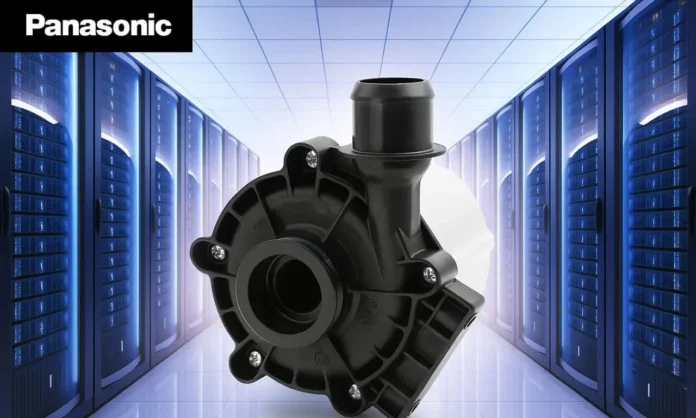Panasonic has launched a new data center cooling product — the Panasonic data center cooling pump — marking a strategic expansion into high-efficiency liquid cooling for AI-driven infrastructure. Developed for use in Coolant Distribution Units (CDUs), this next-generation pump is designed to meet the growing thermal demands of today’s data centers.
The announcement coincides with a major milestone: 70 years since Panasonic began producing its first pumps for domestic water systems. Now, the company is moving into digital infrastructure with technology built for high-density, next-generation workloads.
“This new circulation pump is a direct response to the growing thermal needs of data infrastructure,” said a Panasonic spokesperson. “It represents a shift in how we apply our legacy technology to future applications.”
Built for the Age of AI and High-Density Data
As AI continues to evolve, so do the demands placed on data centers. The heat generated by high-performance processors, especially GPUs used in generative AI, is creating new pressure for efficient and compact cooling solutions.
Panasonic’s new pump addresses this head-on. It is designed specifically for integration into CDUs, offering the performance and reliability needed to support mission-critical server environments.
Unlike traditional air-based cooling systems, this solution delivers liquid-based circulation, ensuring better heat exchange and lower energy usage.
Key Features of the New Panasonic Cooling Pump
1. High Performance
Using advanced simulation tools — including magnetic field analysis, fluid dynamics, and flow modelling — Panasonic engineers have increased pump capacity from 40 to 70 liters per minute, all while keeping the same compact size.
This boost in performance translates into simplified system design, better flow management, and improved energy efficiency across cooling networks.
2. Compact Design
One of the main challenges in CDU systems is space. Panasonic has leveraged its design experience from built-in residential pump units to deliver a high-capacity pump in a compact housing.
The result: layout flexibility and better integration into tightly packed server environments.
3. Long-Term Reliability
The adoption of submersible sliding bearings and an optimized internal structure helps ensure long-term stable operation. These features also contribute to lower maintenance costs — a key benefit for 24/7 data center operations.
A 70-Year Journey in Pump Innovation
Panasonic began its pump journey in 1955, with the launch of home water pumps to supply households with running water. Over the decades, the company expanded its expertise, developing:
Built-in AC pumps for water heaters in the 1980s
Energy-efficient DC pumps for heating and bathroom appliances
Pumps integrated into a wide range of OEM equipment — both in Japan and globally
Today, Panasonic’s pump technology is used in combustion-type water heaters, air-to-water heat pumps, and heating systems. In 2025, cumulative shipments surpassed 53 million units — and the company is now setting its sights higher.
By 2035, Panasonic aims to reach 100 million pump shipments, supported by expanded adoption in data infrastructure and other industrial systems.
Global Reach, Domestic Roots
All Panasonic pumps, including the new cooling water circulation model, are manufactured at the company’s Hikone Factory in Shiga Prefecture, Japan. From there, the technology is integrated into products and systems distributed worldwide.
By maintaining full control over manufacturing and quality assurance, Panasonic ensures that its pumps meet the highest standards of safety, durability, and energy efficiency.
Strategic Vision for Infrastructure Cooling
This latest development is more than just a product launch — it’s part of a broader strategic enhancement of Panasonic’s pump business.
As the global demand for sustainable cooling increases — driven by AI, cloud computing, and digitized operations — Panasonic is positioning itself as a reliable partner for infrastructure developers.
Its new pump supports:
Lower power consumption
Reduced carbon footprint
Increased uptime for data systems
Greater design freedom for engineers and operators
Why It Matters for Supermarkets and Smart Infrastructure
While this innovation is designed for data centers, the underlying technology holds promise across other areas too — particularly for retail and supply chain operators exploring AI, edge computing, and smart logistics.
Efficient cooling is becoming essential for:
Server rooms in supermarkets
Automated warehouse hubs
EV charging infrastructure
Cold chain refrigeration systems
Panasonic’s ability to bring high-tech cooling to compact and commercial-scale spaces could influence multiple sectors — including food retail, distribution, and smart urban environments.



